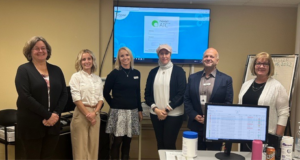This article was written by Rowan Quinn, for RNZ (Radio New Zealand). Published January 27, 2023. To access the original article, click here.
The number of people overdue for elective surgery has grown by thousands.
The latest available figures from Te Whatu Ora/Health NZ show there were 30,000 people waiting longer than the four month target for their planned surgery at the end of October.
In May, when the Planned Care Taskforce was formed to cut national surgical waiting lists, there were roughly 27,500.
Most were considered non-urgent patients but many were living with conditions that had a huge impact on their lives and families.
Association of General Surgeons president Vanessa Blair said even something like a hernia could be very painful, meaning people could not work or enjoy the things they normally did.
It was very disconcerting to see the consistent trend upwards, she said.
“The measures that have been taken, or have been indicated to have been taken, are not turning the ship around quickly,” she said.
The data also showed the postcode lottery was alive and well.
In some places, like Taranaki, Northland and Mid Central, more than 60 percent of planned care patients were overdue for their surgery.
In Counties Manukau that was only 20 percent.
But Dr Blair said that did not show the full picture, because different districts had different criteria for who qualified for surgery.
The wait list problem was complex and more detailed data was needed to try to understand it, she said.
For example, identifying if certain specialities were struggling more than others.
New Zealand committee of the Royal Australian and New Zealand College of Obstetricians and Gynaecologists chair Sue Fleming said the surgical delays were the tip of the iceberg when it came to the wait for planned care.
Many women with conditions like heavy menstrual bleeding waited to seek care in the first place and then had often seen GPs and specialists and tried other treatments before getting a surgical referral, she said.
“Better, more equitable access to care in the community for women and gender diverse people would ultimately help decrease waiting lists,” she said.
“Some of those issues could be dealt with before there is a need for hospital-based treatment,” she said.
The number of people overdue for a first appointment with a specialist had also grown.
In October there were 38,051 waiting longer than four months, up from 35,803 in May.
However the numbers had been fluctuating much more, unlike the consistent upward trend for surgery.
There had been progress on the number of patients who had been waiting the longest – more than a year – for surgery.
They were an early priority for the taskforce, and the number waiting had fallen from 5412 in May to 3529 in October.
Te Whatu Ora-Health NZ said it was working hard to improve waiting times, but the recovery from the backlog was a multi-year programme of work.
“Marked improvements are going to take some time as new systems and processes are bedded in,” Te Whatu Ora national director hospital and specialist services Fionnagh Dougan said in a statement.
Covid-19 continued to stretch capacity in the heathcare system, and a reduced amount of planned care had been delivered since October 2022 due to factors including workforce shortages in key areas, increased staff sickness and absences and continued pressure on hospitals where people needing urgent care must be prioritised.
In addition to increasing additional surgical capacity, other initiatives had been identified and would be implemented this year, Dougan said.
“The focus to date has been on initiatives to book and treat patients waiting more than 365 days for inpatient elective surgery, and prioritising Māori and Pacific people.
“An area where significant progress has been made is in planned care interventions, which includes inpatient surgical discharges, minor procedures and non-surgical interventions.”
The number of interventions performed has risen significantly from 23,495 in July 2022, to 128,681 in November 2022, the statement said.
Te Whatu Ora continued to maintain contact with patients to ensure, if necessary, their condition is reprioritised if there was a change in urgency.



